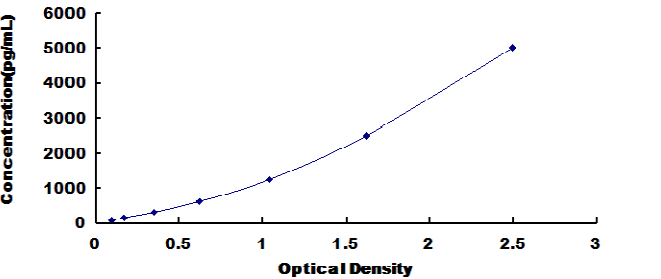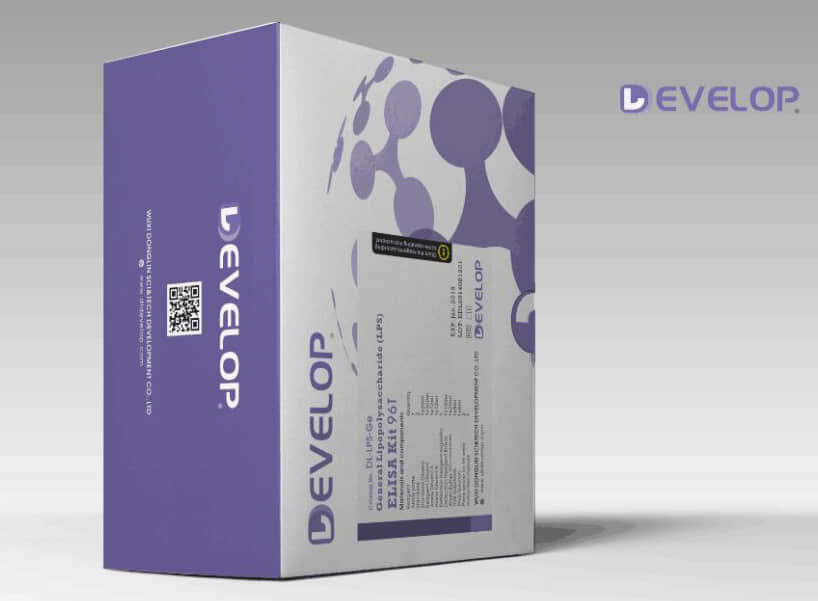Mouse C-Ros Oncogene 1, Receptor Tyrosine Kinase (ROS1) ELISA Kit


two product lines: Traditional ELISA Kit and Ready-to-Use ELISA Kit.


Other names:AHNAKRS; AHNAK Nucleoprotein; Neuroblast differentiation-associated protein AHNAK
Function:May be required for neuronal cell differentiation.
Sequence:
MEKEETTREL LLPNWQGSGS HGLTIAQRDD GVFVQEVTQN SPAARTGVVK
EGDQIVGATI YFDNLQSGEV TQLLNTMGHH TVGLKLHRKG DRSPEPGQTW
TREVFSSCSS EVVLSGDDEE YQRIYTTKIK PRLKSEDGVE GDLGETQSRT
ITVTRRVTAY TVDVTGREGA KDIDISSPEF KIKIPRHELT EISNVDVETQ
SGKTVIRLPS GSGAASPTGS AVDIRAGAIS ASGPELQGAG HSKLQVTMPG
IKVGGSGVNV NAKGLDLGGR GGVQVPAVDI SSSLGGRAVE VQGPSLESGD
HGKIKFPTMK VPKFGVSTGR EGQTPKAGLR VSAPEVSVGH KGGKPGLTIQ
APQLEVSVPS ANIEGLEGKL KGPQITGPSL EGDLGLKGAK PQGHIGVDAS
APQIGGSITG PSVEVQAPDI DVQGPGSKLN VPKMKVPKFS VSGAKGEETG
IDVTLPTGEV TVPGVSGDVS LPEIATGGLE GKMKGTKVKT PEMIIQKPKI
SMQDVDLSLG SPKLKGDIKV SAPGVQGDVK GPQVALKGSR VDIETPNLEG
TLTGPRLGSP SGKTGTCRIS MSEVDLNVAA PKVKGGVDVT LPRVEGKVKV
PEVDVRGPKV DVSAPDVEAH GPEWNLKMPK MKMPTFSTPG AKGEGPDVHM
TLPKGDISIS GPKVNVEAPD VNLEGLGGKL KGPDVKLPDM SVKTPKISMP
DVDLHVKGTK VKGEYDVTVP KLEGELKGPK VDIDAPDVDV HGPDWHLKMP
KMKMPKFSVP GFKAEGPEVD VNLPKADVDI SGPKIDVTAP DVSIEEPEGK
LKGPKFKMPE MNIKVPKISM PDVDLHLKGP NVKGEYDVTM PKVESEIKVP
DVELKSAKMD IDVPDVEVQG PDWHLKMPKM KMPKFSMPGF KAEGPEVDVN
LPKADVDISG PKVGVEVPDV NIEGPEGKLK GPKFKMPEMN IKAPKISMPD
VDLHMKGPKV KGEYDMTVPK LEGDLKGPKV DVSAPDVEMQ GPDWNLKMPK
IKMPKFSMPS LKGEGPEFDV NLSKANVDIS APKVDTNAPD LSLEGPEGKL
KGPKFKMPEM HFRAPKMSLP DVDLDLKGPK MKGNVDISAP KIEGEMQVPD
VDIRGPKVDI KAPDVEGQGL DWSLKIPKMK MPKFSMPSLK GEGPEVDVNL
PKADVVVSGP KVDIEAPDVS LEGPEGKLKG PKFKMPEMHF KTPKISMPDV
DLHLKGPKVK GDVDVSVPKV EGEMKVPDVE IKGPKMDIDA PDVEVQGPDW
HLKMPKMKMP KFSMPGFKGE GREVDVNLPK ADIDVSGPKV DVEVPDVSLE
GPEGKLKGPK FKMPEMHFKA PKISMPDVDL NLKGPKLKGD VDVSLPEVEG
EMKVPDVDIK GPKVDISAPD VDVHGPDWHL KMPKVKMPKF SMPGFKGEGP
EVDVKLPKAD VDVSGPKMDA EVPDVNIEGP DAKLKGPKFK MPEMSIKPQK
ISIPDVGLHL KGPKMKGDYD VTVPKVEGEI KAPDVDIKGP KVDINAPDVE
VHGPDWHLKM PKVKMPKFSM PGFKGEGPEV DMNLPKADLG VSGPKVDIDV
PDVNLEAPEG KLKGPKFKMP SMNIQTHKIS MPDVGLNLKA PKLKTDVDVS
LPKVEGDLKG PEIDVKAPKM DVNVGDIDIE GPEGKLKGPK FKMPEMHFKA
PKISMPDVDL HLKGPKVKGD MDVSVPKVEG EMKVPDVDIK GPKVDIDAPD
VEVHDPDWHL KMPKMKMPKF SMPGFKAEGP EVDVNLPKAD IDVSGPSVDT
DAPDLDIEGP EGKLKGSKFK MPKLNIKAPK VSMPDVDLNL KGPKLKGEID
ASVPELEGDL RGPQVDVKGP FVEAEVPDVD LECPDAKLKG PKFKMPEMHF
KAPKISMPDV DLHLKGPKVK GDADVSVPKL EGDLTGPSVG VEVPDVELEC
PDAKLKGPKF KMPDMHFKAP KISMPDVDLH LKGPKVKGDV DVSVPKLEGD
LTGPSVGVEV PDVELECPDA KLKGPKFKMP EMHFKTPKIS MPDVDLHLKG
PKVKGDMDVS VPKVEGEMKV PDVDIKGPKM DIDAPDVDVH GPDWHLKMPK
MKMPKFSMPG FKAEGPEVDV NLPKADVVVS GPKVDVEVPD VSLEGPEGKL
KGPKLKMPEM HFKAPKISMP DVDLHLKGPK VKGDVDVSLP KLEGDLTGPS
VDVEVPDVEL ECPDAKLKGP KFKMPEMHFK TPKISMPDVN LNLKGPKVKG
DMDVSVPKVE GEMKVPDVDI RGPKVDIDAP DVDVHGPDWH LKMPKMKMPK
FSMPGFKGEG PEVDVNLPKA DVDVSGPKVD VEVPDVSLEG PEGKLKGPKF
KMPEMHFKTP KISMPDVDFN LKGPKIKGDV DVSAPKLEGE LKGPELDVKG
PKLDADMPEV AVEGPNGKWK TPKFKMPDMH FKAPKISMPD LDLHLKSPKA
KGEVDVDVPK LEGDLKGPHV DVSGPDIDIE GPEGKLKGPK FKMPDMHFKA
PNISMPDVDL NLKGPKIKGD VDVSVPEVEG KLEVPDMNIR GPKVDVNAPD
VQAPDWHLKM PKMKMPKFSM PGFKAEGPEV DVNLPKADVD ISGPKVDIEG
PDVNIEGPEG KLKGPKLKMP EMNIKAPKIS MPDFDLHLKG PKVKGDVDVS
LPKVEGDLKG PEVDIKGPKV DINAPDVGVQ GPDWHLKMPK VKMPKFSMPG
FKGEGPDGDV KLPKADIDVS GPKVDIEGPD VNIEGPEGKL KGPKFKMPEM
NIKAPKISMP DIDLNLKGPK VKGDVDVSLP KVEGDLKGPE VDIKGPKVDI
DAPDVDVHGP DWHLKMPKIK MPKISMPGFK GEGPDVDVNL PKADIDVSGP
KVDVECPDVN IEGPEGKWKS PKFKMPEMHF KTPKISMPDI DLNLTGPKIK
GDVDVTGPKV EGDLKGPEVD LKGPKVDIDV PDVNVQGPDW HLKMPKMKMP
KFSMPGFKAE GPEVDVNLPK ADVDVSGPKV DVEGPDVNIE GPEGKLKGPK
FKMPEMNIKA PKIPMPDFDL HLKGPKVKGD VDISLPKVEG DLKGPEVDIR
GPQVDIDVPD VGVQGPDWHL KMPKVKMPKF SMPGFKGEGP DVDVNLPKAD
LDVSGPKVDI DVPDVNIEGP EGKLKGPKFK MPEMNIKAPK ISMPDIDLNL
KGPKVKGDMD VSLPKVEGDM KVPDVDIKGP KVDINAPDVD VQGPDWHLKM
PKIKMPKISM PGFKGEGPEV DVNLPKADLD VSGPKVDVDV PDVNIEGPDA
KLKGPKFKMP EMNIKAPKIS MPDLDLNLKG PKMKGEVDVS LANVEGDLKG
PALDIKGPKI DVDAPDIDIH GPDAKLKGPK LKMPDMHVNM PKISMPEIDL
NLKGSKLKGD VDVSGPKLEG DIKAPSLDIK GPEVDVSGPK LNIEGKSKKS
RFKLPKFNFS GSKVQTPEVD VKGKKPDIDI TGPKVDINAP DVEVQGKVKG
SKFKMPFLSI SSPKVSMPDV ELNLKSPKVK GDLDIAGPNL EGDFKGPKVD
IKAPEVNLNA PDVDVHGPDW NLKMPKMKMP KFSVSGLKAE GPDVAVDLPK
GDINIEGPSM NIEGPDLNVE GPEGGLKGPK FKMPDMNIKA PKISMPDIDL
NLKGPKVKGD VDISLPKLEG DLKGPEVDIK GPKVDINAPD VDVHGPDWHL
KMPKVKMPKF SMPGFKGEGP EVDVTLPKAD IDISGPNVDV DVPDVNIEGP
DAKLKGPKFK MPEMNIKAPK ISMPDFDLNL KGPKMKGDVV VSLPKVEGDL
KGPEVDIKGP KVDIDTPDIN IEGSEGKFKG PKFKIPEMHL KAPKISMPDI
DLNLKGPKVK GDVDVSLPKM EGDLKGPEVD IKGPKVDINA PDVDVQGPDW
HLKMPKVKMP KFSMPGFKGE GPDVDVNLPK ADLDVSGPKV DIDVPDVNIE
GPEGKLKGPK FKMPEMNIKA PKISMPDIDL NLKGPKVKGD MDVSLPKVEG
DMQVPDLDIK GPKVDINAPD VDVRGPDWHL KMPKIKMPKI SMPGFKGEGP
EVDVNLPKAD LDVSGPKVDV DVPDVNIEGP DAKLKGPKFK MPEMNIKAPK
ISMPDFDLHL KGPKVKGDVD VSLPKMEGDL KAPEVDIKGP KVDIDAPDVD
VHGPDWHLKM PKVKMPKFSM PGFKGEGPEV DVNLPKADID VSGPKVDIDT
PDIDIHGPEG KLKGPKFKMP DLHLKAPKIS MPEVDLNLKG PKMKGDVDVS
LPKVEGDLKG PEVDIKGPKV DIDVPDVDVQ GPDWHLKMPK VKMPKFSMPG
FKGEGPDVDV NLPKADLDVS GPKVDIDVPD VNIEGPDAKL KGPKFKMPEM
NIKAPKISMP DFDLHLKGPK VKGDVDVSLP KVEGDLKGPE VDIKGPKVDI
DAPDVDVHGP DWHLKMPKVK MPKFSMPGFK GEGPDVDVTL PKADIEISGP
KVDIDAPDVS IEGPDAKLKG PKFKMPEMNI KAPKISMPDI DFNLKGPKVK
GDVDVSLPKV EGDLKGPEID IKGPSLDIDT PDVNIEGPEG KLKGPKFKMP
EMNIKAPKIS MPDFDLHLKG PKVKGDVDVS LPKVESDLKG PEVDIEGPEG
KLKGPKFKMP DVHFKSPQIS MSDIDLNLKG PKIKGDMDIS VPKLEGDLKG
PKVDVKGPKV GIDTPDIDIH GPEGKLKGPK FKMPDLHLKA PKISMPEVDL
NLKGPKVKGD MDISLPKVEG DLKGPEVDIR DPKVDIDVPD VDVQGPDWHL
KMPKVKMPKF SMPGFKGEGP DVDVNLPKAD IDVSGPKVDV DVPDVNIEGP
DAKLKGPKFK MPEMSIKAPK ISMPDIDLNL KGPKVKGDVD VTLPKVEGDL
KGPEADIKGP KVDINTPDVD VHGPDWHLKM PKVKMPKFSM PGFKGEGPDV
DVSLPKADID VSGPKVDVDI PDVNIEGPDA KLKGPKFKMP EINIKAPKIS
IPDVDLDLKG PKVKGDFDVS VPKVEGTLKG PEVDLKGPRL DFEGPDAKLS
GPSLKMPSLE ISAPKVTAPD VDLHLKAPKI GFSGPKLEGG EVDLKGPKVE
APSLDVHMDS PDINIEGPDV KIPKFKKPKF GFGAKSPKAD IKSPSLDVTV
PEAELNLETP EISVGGKGKK SKFKMPKIHM SGPKIKAKKQ GFDLNVPGGE
IDASLKAPDV DVNIAGPDAA LKVDVKSPKT KKTMFGKMYF PDVEFDIKSP
KFKAEAPLPS PKLEGELQAP DLELSLPAIH VEGLDIKAKA PKVKMPDVDI
SVPKIEGDLK GPKVQANLGA PDINIEGLDA KVKTPSFGIS APQVSIPDVN
VNLKGPKIKG DVPSVGLEGP DVDLQGPEAK IKFPKFSMPK IGIPGVKMEG
GGAEVHAQLP SLEGDLRGPD VKLEGPDVSL KGPGVDLPSV NLSMPKVSGP
DLDLNLKGPS LKGDLDASVP SMKVHAPGLN LSGVGGKMQV GGDGVKVPGI
DATTKLNVGA PDVTLRGPSL QGDLAVSGDI KCPKVSVGAP DLSLEASEGS
IKLPKMKLPQ FGISTPGSDL HVNAKGPQVS GELKGPGVDV NLKGPRISAP
NVDFNLEGPK VKGSLGATGE IKGPTVGGGL PGIGVQGLEG NLQMPGIKSS
GCDVNLPGVN VKLPTGQISG PEIKGGLKGS EVGFHGAAPD ISVKGPAFNM
ASPESDFGIN LKGPKIKGGA DVSGGVSAPD ISLGEGHLSV KGSGGEWKGP
QVSSALNLDT SKFAGGLHFS GPKVEGGVKG GQIGLQAPGL SVSGPQGHLE
SGSGKVTFPK MKIPKFTFSG RELVGREMGV DVHFPKAEAS IQAGAGDGEW
EESEVKLKKS KIKMPKFNFS KPKGKGGVTG SPEASISGSK GDLKSSKASL
GSLEGEAEAE ASSPKGKFSL FKSKKPRHRS NSFSDEREFS GPSTPTGTLE
FEGGEVSLEG GKVKGKHGKL KFGTFGGLGS KSKGHYEVTG SDDETGKLQG
SGVSLASKKS RLSSSSSNDS GNKVGIQLPE VELSVSTKKE
2. Features
INTENDED USE
The kit is a sandwich enzyme immunoassay for the in vitro quantitative measurement of AHNAK in human tissue homogenates, cell lysates and other biological fluids.
DETECTION RANGE
0.312-20ng/mL. The standard curve concentrations used for the ELISA’s were 20ng/mL, 10ng/mL, 5ng/mL, 2.5ng/mL, 1.25ng/mL, 0.625ng/mL, 0.312ng/mL.
SENSITIVITY
The minimum detectable dose of AHNAK is typically less than 0.117ng/mL.
The sensitivity of this assay, or Lower Limit of Detection (LLD) was defined as the lowest protein concentration that could be differentiated from zero. It was determined by adding two standard deviations to the mean optical density value of twenty zero standard replicates and calculating the corresponding concentration.
SPECIFICITY
This assay has high sensitivity and excellent specificity for detection of AHNAK.
No significant cross-reactivity or interference between AHNAK and analogues was observed.
Note: Limited by current skills and knowledge, it is impossible to perform all possible cross-reactivity detection tests between AHNAK and all analogues, therefore, cross reactivity may still exist.
IMPORTANT NOTES
1. Limited by the current conditions and scientific technology, it is impossible to conduct comprehensive identification and analysis tests on the raw materials provided by suppliers. As a result, it is possible there are some qualitative and/or technical risks.
2. The final experimental results will be closely related to the validity of the products, operation skills of the end users and the experimental environments. Please make sure that sufficient samples are available to obtain accurate results.
3. Kits from different batches may be a little different in detection range, sensitivity and color developing time. Please perform the experiment exactly according to the instruction manual included in your kit. Electronic ones on our website are for reference only.
4. Do not mix or substitute reagents from one kit lot to another. Use only the reagents supplied by manufacturer.
5. Protect all reagents from strong light during storage and incubation. All bottle caps of reagents should be closed tightly to prevent evaporation of liquids and contamination by microorganisms.
6. There may be a foggy substance in the wells when the plate is opened at the first time. It will not have any effect on the final assay results. Do not remove microtiter plate from the storage bag until needed.
7. Incorrect procedures during reagent preparation and loading, as well as incorrect parameter setting for the plate reader may lead to incorrect results. A microplate plate reader with a bandwidth of 10nm or less and an optical density range of 0-3 O.D. or greater at 450 ± 10nm wavelength is acceptable for use in absorbance measurement. Please read the instruction carefully and adjust the instrument prior to the experiment.
8. Even the same experimenter may get different results from two separate experiments. In order to get better reproducible results, the operation of every step in the assay should be controlled. Furthermore, a preliminary experiment before the general assay for each batch is recommended.
9. Each kit has undergone several rigorous quality control tests. However, results from end users might be inconsistent with our in-house data due to some unexpected transportation conditions or different lab equipment. Intra-assay variance among kits from different batches could arise from the above factors as well.
10. Kits from different manufacturers with the same item might produce different results, since we have not compared our products with other manufacturers.
11. The standard in this kit, as well as the antigens used in antibody preparation are typically recombinant proteins. Differently expressed sequences, expression systems, and/or purification methods can be used in the preparation of recombinant proteins. There is also the possibility of differences in the screening technique of antibodies and antibody pairs in our kits. As a result, we cannot guarantee that our kit will be able to detect recombinant proteins produced by other companies. We do NOT recommend using our ELISA kits for the detection of other recombinant proteins.
12. Validity period: 12 months.
13. The instruction manual also works with the 48T kit, but all reagents in the 48T kit are reduced by half.
You can reference link of the kit as following
https://dldevelop.com/Research-reagent/dl-ahnak-hu.html
https://www.dldevelop.com/uploadfile/data/DL-AHNAK-Hu.pdf
Introduction
| Item | Standard | Test | |
| Description |
The kit is a sandwich enzyme immunoassay for the in vitro quantitative measurement of ROS1 in mouse serum, plasma, tissue homogenates or other biological fluids. |
Conform | |
| Identification | Colorimetric | Positive | |
| Composition | Traditional ELISA Kit | Ready-to-Use ELISA KIT | Conform |
| Pre-coated, ready to use 96-well strip plate 1 | Pre-coated, ready to use 96-well strip plate 1 | ||
| Plate sealer for 96 wells 2 | Plate sealer for 96 wells 2 | ||
| Standard 2 | Standard 2 | ||
| Diluents buffer 1×45mL | Standard Diluent 1×20mL | ||
| Detection Reagent A 1×120μL | Detection Solution A 1×12mL | ||
| Detection Reagent B 1×120μL | Detection Solution B 1×12mL | ||
| TMB Substrate 1×9mL | TMB Substrate 1×9mL | ||
| Stop Solution 1×6mL | Stop Solution 1×6mL | ||
| Wash Buffer (30 × concentrate) 1×20mL | Wash Buffer (30 × concentrate) 1×20mL | ||
| Instruction manual 1 | Instruction manual 1 | ||
Test principle
The microtiter plate provided in this kit has been pre-coated with an antibody specific to the index. Standards or samples are then added to the appropriate microtiter plate wells with a biotin-conjugated antibody preparation specific to the index. Next, Avidin conjugated to Horseradish Peroxidase (HRP) is added to each microplate well and incubated. After TMB substrate solution is added, only those wells that contain the index, biotin-conjugated antibody and enzyme-conjugated Avidin will exhibit a change in color. The enzyme-substrate reaction is terminated by the addition of sulphuric acid solution and the color change is measured spectrophotometrically at a wavelength of 450nm ± 10nm. The concentration of the index in the samples is then determined by comparing the O.D. of the samples to the standard curve.
Recovery
Matrices listed below were spiked with certain level of recombinant ROS1 and the recovery rates were calculated by comparing the measured value to the expected amount of the index in samples.
| Matrix | Recovery range (%) | Average(%) |
| serum(n=5) | 81-93 | 86 |
| EDTA plasma(n=5) | 80-97 | 88 |
| heparin plasma(n=5) | 90-101 | 95 |
Linearity
The linearity of the kit was assayed by testing samples spiked with appropriate concentration of the index and their serial dilutions. The results were demonstrated by the percentage of calculated concentration to the expected.
| Sample | 1:2 | 1:4 | 1:8 | 1:16 |
| serum(n=5) | 82-96% | 83-98% | 81-99% | 93-101% |
| EDTA plasma(n=5) | 88-101% | 86-95% | 90-102% | 80-93% |
| heparin plasma(n=5) | 80-91% | 82-90% | 95-104% | 79-95% |
Precision
Intra-assay Precision (Precision within an assay): 3 samples with low, middle and high level the index were tested 20 times on one plate, respectively.
Inter-assay Precision (Precision between assays): 3 samples with low, middle and high level the index were tested on 3 different plates, 8 replicates in each plate.
CV(%) = SD/meanX100
Intra-Assay: CV<10%
Inter-Assay: CV<12%
Stability
The stability of ELISA kit is determined by the loss rate of activity. The loss rate of this kit is less than 5% within the expiration date under appropriate storage conditions.
Note:
To minimize unnecessary influences on the performance, operation procedures and lab conditions, especially room temperature, air humidity and incubator temperatures should be strictly regulated. It is also strongly suggested that the whole assay is performed by the same experimenter from the beginning to the end.
Assay procedure summary
1. Prepare all reagents, samples and standards;
2. Add 100µL standard or sample to each well. Incubate 2 hours at 37℃;
3. Aspirate and add 100µL prepared Detection Reagent A. Incubate 1 hour at 37℃;
4. Aspirate and wash 3 times;
5. Add 100µL prepared Detection Reagent B. Incubate 1 hour at 37℃;
6. Aspirate and wash 5 times;
7. Add 90µL Substrate Solution. Incubate 15-25 minutes at 37℃;
8. Add 50µL Stop Solution. Read at 450nm immediately.
Order or get a Quote
We will reply you within 24 hours!














